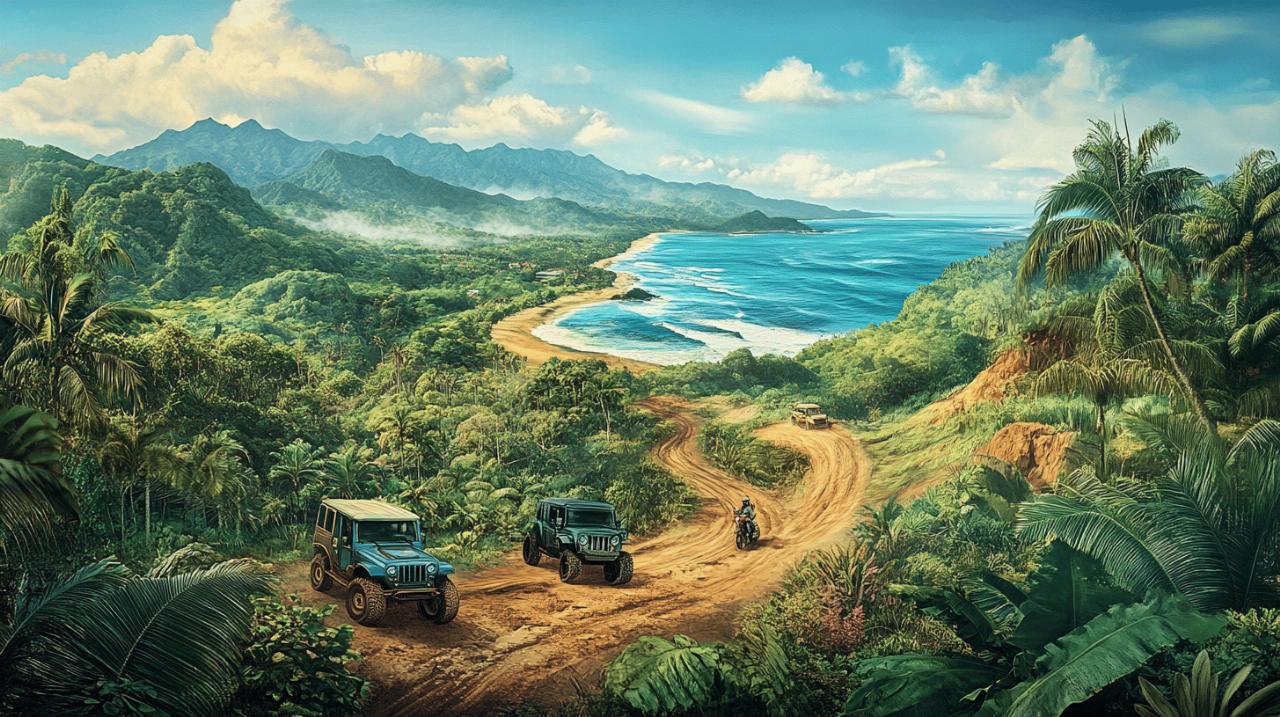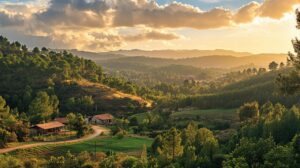Embarking on a Costa Rican adventure presents travelers with lush rainforests, stunning beaches, active volcanoes, and vibrant wildlife. Selecting the right vehicle becomes crucial when planning to explore this Central American paradise, as the diverse landscapes demand different driving capabilities.
Navigating costa rica's diverse terrain
Costa Rica's varied topography creates unique driving challenges that require careful vehicle selection. From the bustling streets of San José to remote mountain villages, your choice of transportation will significantly impact your travel experience. The right vehicle ensures not only safety but also access to hidden gems off the beaten path.
Coastal routes vs mountain passages
Costa Rica's coastal roads and mountain passages present distinctly different driving experiences. For beach destinations like Tamarindo, Santa Teresa, or Puerto Viejo, a mid-size SUV provides comfortable navigation with sufficient clearance for occasional rough patches. These coastal routes typically feature better-maintained roads, making them accessible to most vehicle types during the dry season. Mountain passages to destinations like Monteverde or San Gerardo de Dota demand more robust transportation, ideally a 4×4 vehicle with higher clearance. These mountainous areas often feature steep inclines, sharp turns, and sometimes unpaved sections that can challenge standard vehicles. You can find detailed information about specific route conditions for different regions visit https://www.elrinconcunqueiru.com/ for comprehensive guidance on matching your vehicle to your intended destinations.
Handling unpaved roads during rainy season
The rainy season (May through November) transforms Costa Rica's road network, particularly unpaved sections. What appears as a simple dirt road during dry months can become challenging mud tracks after heavy rainfall. For travel during this period, a 4×4 vehicle is often essential, especially when visiting national parks or rural accommodations. These vehicles provide the necessary traction and ground clearance to navigate safely through water crossings and muddy conditions. Even some popular destinations like Nosara or parts of the Osa Peninsula become significantly more accessible with four-wheel drive capabilities during wet months. When booking your rental, confirm whether it has stability control and ABS brakes for additional safety on slippery surfaces.
Vehicle options for costa rican exploration
Costa Rica offers diverse landscapes from lush rainforests to stunning beaches, making your choice of rental car crucial for a successful adventure. The varied terrain throughout this Central American paradise demands careful consideration of vehicle type based on your planned destinations, travel season, and group size.
When planning your Costa Rican journey, understanding the relationship between destinations and vehicle requirements can maximize both enjoyment and safety. Road conditions vary significantly across the country, with paved highways near urban centers and challenging unpaved roads in remote regions.
4×4 suvs for off-road freedom
For travelers venturing into Costa Rica's mountainous regions like Monteverde Cloud Forest, Río Celeste, or the Osa Peninsula, a 4×4 vehicle is often essential. These robust SUVs provide necessary clearance and traction for unpaved roads, steep inclines, and potential river crossings, especially during the rainy season (May-November).
4×4 vehicles are particularly valuable when exploring remote national parks such as Corcovado, where road infrastructure becomes minimal. While priced between $70-$150 per day, the investment delivers unparalleled access to Costa Rica's most pristine natural wonders. Many travelers find this expense worthwhile for the freedom to discover secluded beaches and hidden waterfalls beyond typical tourist routes.
During wet season travel, even some popular destinations like Nosara may require 4×4 capability as normally passable roads can become challenging. GPS navigation is strongly recommended when venturing off main highways, and maintaining a full fuel tank is prudent when exploring rural areas where gas stations are sparse.
Compact Cars for Urban Areas and Paved Highways
Budget-conscious travelers staying primarily in urban centers like San José, Alajuela, or Heredia will find compact cars or sedans perfectly adequate. These fuel-efficient options typically range from $20-$40 daily, making them ideal for solo travelers or couples with minimal luggage.
Compact cars perform well on Costa Rica's paved highways and provide excellent fuel economy—an important consideration given the distances between major attractions. Many coastal destinations with well-developed infrastructure, such as Manuel Antonio National Park, are accessible without 4×4 capability during the dry season (December-April).
For families or small groups requiring more space but not planning extensive off-road adventures, mid-size SUVs or crossovers offer a balanced compromise. These vehicles provide additional luggage capacity and passenger comfort while handling light off-road conditions found in popular beach towns like Tamarindo, Santa Teresa, or Puerto Viejo.
When booking any vehicle type, verify whether you're comfortable with manual transmission or require automatic, as both options are common in Costa Rica's rental fleet. Comprehensive insurance is highly recommended regardless of vehicle choice, given the unpredictable road conditions and potential for unexpected obstacles.





